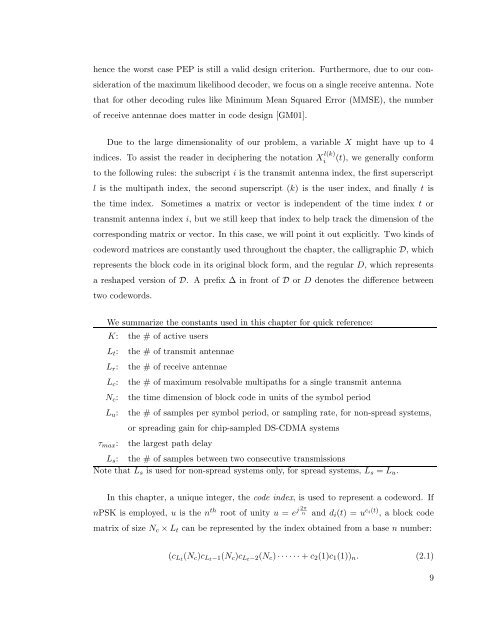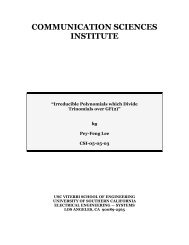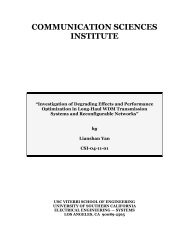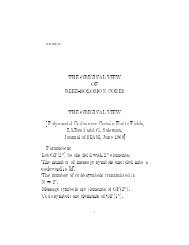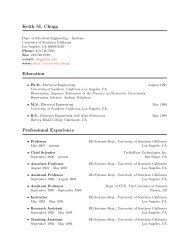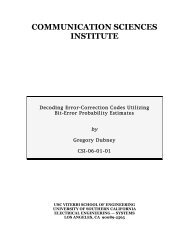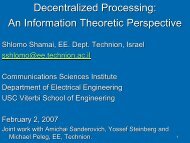Space-Time Block Codes for Wireless Systems - The ...
Space-Time Block Codes for Wireless Systems - The ...
Space-Time Block Codes for Wireless Systems - The ...
You also want an ePaper? Increase the reach of your titles
YUMPU automatically turns print PDFs into web optimized ePapers that Google loves.
hence the worst case PEP is still a valid design criterion. Furthermore, due to our consideration<br />
of the maximum likelihood decoder, we focus on a single receive antenna. Note<br />
that <strong>for</strong> other decoding rules like Minimum Mean Squared Error (MMSE), the number<br />
of receive antennae does matter in code design [GM01].<br />
Due to the large dimensionality of our problem, a variable X might have up to 4<br />
indices. To assist the reader in deciphering the notation X l(k)<br />
i<br />
(t), we generally con<strong>for</strong>m<br />
to the following rules: the subscript i is the transmit antenna index, the first superscript<br />
l is the multipath index, the second superscript (k) is the user index, and finally t is<br />
the time index.<br />
Sometimes a matrix or vector is independent of the time index t or<br />
transmit antenna index i, but we still keep that index to help track the dimension of the<br />
corresponding matrix or vector. In this case, we will point it out explicitly. Two kinds of<br />
codeword matrices are constantly used throughout the chapter, the calligraphic D, which<br />
represents the block code in its original block <strong>for</strong>m, and the regular D, which represents<br />
a reshaped version of D. A prefix ∆ in front of D or D denotes the difference between<br />
two codewords.<br />
We summarize the constants used in this chapter <strong>for</strong> quick reference:<br />
K: the # of active users<br />
L t : the # of transmit antennae<br />
L r : the # of receive antennae<br />
L c : the # of maximum resolvable multipaths <strong>for</strong> a single transmit antenna<br />
N c : the time dimension of block code in units of the symbol period<br />
L u : the # of samples per symbol period, or sampling rate, <strong>for</strong> non-spread systems,<br />
or spreading gain <strong>for</strong> chip-sampled DS-CDMA systems<br />
τ max : the largest path delay<br />
L s : the # of samples between two consecutive transmissions<br />
Note that L s is used <strong>for</strong> non-spread systems only, <strong>for</strong> spread systems, L s = L u .<br />
In this chapter, a unique integer, the code index, is used to represent a codeword. If<br />
nPSK is employed, u is the n th root of unity u = e j 2π n and d i (t) = u ci(t) , a block code<br />
matrix of size N c × L t can be represented by the index obtained from a base n number:<br />
(c Lt (N c )c Lt−1(N c )c Lt−2(N c ) · · · · · · + c 2 (1)c 1 (1)) n . (2.1)<br />
9


